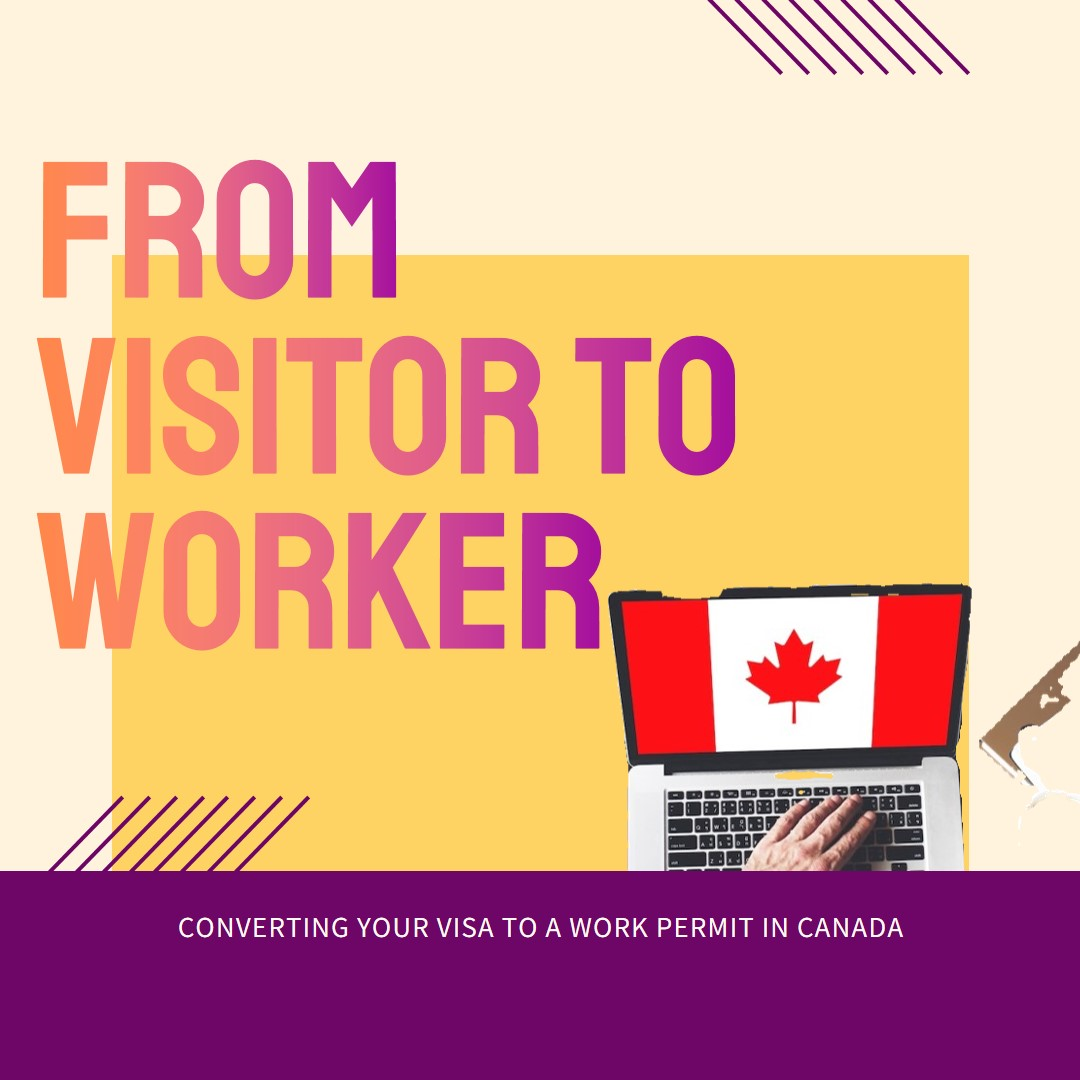
With Canada facing skilled labor shortages across various sectors, the opportunity to transition from visitor status to a work permit has become increasingly attractive for many. This guide delves into the details of this process, considering the latest policy updates and incorporating valuable insights.
A Temporary Window of Opportunity
Traditionally, visitors in Canada couldn’t apply for work permits within the country. However, due to a temporary public policy implemented in response to the pandemic’s impact on the workforce, visitors can now apply for employer-specific work permits until February 28, 2025. This presents a unique chance for those seeking to establish themselves in the Canadian job market.

Understanding Visitor Visas and Work Permits
A visitor visa allows temporary entry into Canada for tourism, business meetings, or visiting family. Stays typically last up to six months, with the possibility of extension through a visitor record application.
In contrast, a work permit grants authorization for legal employment in Canada. These permits come in two varieties: open work permits allowing you to work for any employer and employer-specific permits tied to a particular job and company. Converting a visitor visa to a work permit usually necessitates an employer-specific permit.
Key Requirements for Conversion
To successfully transition from visitor to worker, several crucial requirements must be met:
-
Valid Job Offer with LMIA: A genuine job offer from a Canadian employer with a positive Labour Market Impact Assessment (LMIA) is essential. The LMIA demonstrates that hiring you won’t negatively affect Canadian workers’ employment prospects. There are, however, exceptions for LMIA-exempt occupations like caregivers, where only a job offer suffices.
-
Maintaining Visitor Status: It’s critical to maintain your legal visitor status in Canada throughout the application process. This includes adhering to visa conditions and not engaging in unauthorized employment.
Step-by-Step Guide to Conversion
-
Secure a Job Offer: Begin by finding a Canadian employer willing to hire you. Utilize recruitment agencies, online job boards, and professional networks to maximize your chances. Ensure the job offer is comprehensive, outlining the employment terms and conditions clearly.
-
Employer-Obtained LMIA (if applicable): Most employers will require an LMIA from Employment and Social Development Canada (ESDC). This involves demonstrating a lack of qualified Canadian candidates for the position after sufficient advertising within Canada. The LMIA process incurs a non-refundable CAD $1,000 processing fee borne by the employer.
-
Submitting the Work Permit Application: Once you have the LMIA (or a job offer for an exempt position), you can submit your work permit application. Eligible visitors can apply online through their secure IRCC account.
Required Documents
- Detailed job offer letter
- Positive LMIA (not required for LMIA-exempt jobs)
- Proof of current visitor status in Canada
- Completed application forms (IMM 5710 and IMM 5476 if using a representative)
- Valid passport with a blank page
- Passport-sized photos meeting IRCC specifications
- Proof of funds to support yourself financially
- Medical exam (if required based on your occupation or origin)
- Application processing fees (CAD $155 for work permit, CAD $85 for biometrics)
Streamlining the Wait with Interim Work Authorization
The processing time for a work permit application within Canada can take approximately 135 days, as per the latest IRCC updates. This means you cannot legally work until your permit is approved. However, there’s an option to request an “Interim Authorization to Work” from IRCC to expedite the process. With this authorization, you can begin working after receiving approval from IRCC. Processing for interim work authorization typically takes around 6 weeks.
Current Processing Timelines
According to the most recent IRCC updates (as of May 2024), the average processing time for work permits submitted within Canada is 92 days. Keep in mind that these are estimates, and actual processing times may vary depending on individual circumstances.
Beyond the Conversion: Additional Considerations
Remember, successfully obtaining a work permit is just the first step. Familiarize yourself with Canadian labor laws, tax regulations, and social security benefits. Consider exploring permanent residency options if you envision a long-term future in Canada.
By understanding the current policy landscape, crucial requirements, and valuable tips outlined above, you can increase your chances of successfully converting your visitor status to a work permit and embarking on a rewarding career path in Canada.
